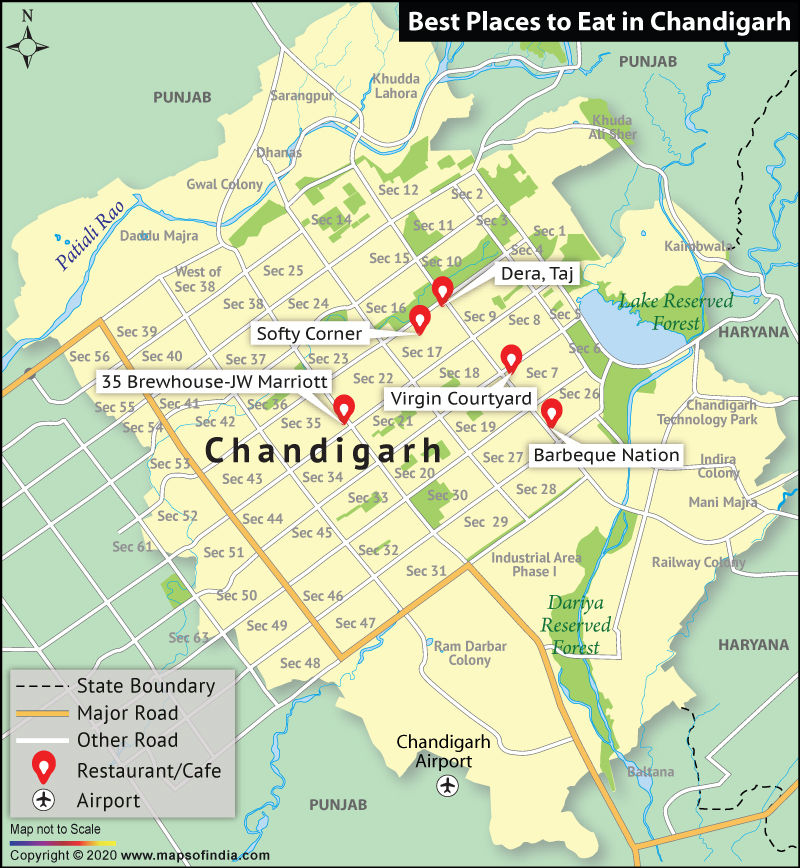
Vegetarianism as understood in India is the exclusion of meat, fish, and eggs from one’s diet. Vegetarians in India are not vegan and frequently consume high quantities of dairy products (lacto vegetarianism).
Most people – both foreigners and Indians themselves – suffer from the mistaken impression that India is predominantly vegetarian. This myth was dispelled by the 2006 ‘The Hindi-CNN IBN State of the Nation Survey’ which revealed that only about 31 percent of Indian families are vegetarian. An additional 9 percent consume eggs but refrain from eating meat or fish. Therefore the majority of the families in the country are non-vegetarians or meat eaters.
Despite the revelation, it remains a fact that India has the lowest meat consumption rates in the world. India is home to the highest vegetarian population in the world. In 2013, The Guardian named India among the best countries to be vegetarian in.
While it is true that being vegetarian in India is an easy option with plenty of food options to choose from and clear labels on packaged foods, it is also true that meat and fish form a very important part of Indian cuisine. Some Indian meat dishes that are now international favorites include –
-
Butter/Tandoori Chicken
-
Lamb Vindaloo & Rogan Josh
-
Maccher Jhol (Fish Curry)
-
Chettinad Chicken
-
Mutton Biryani
Religious Sanctions and Vegetarianism
Contrary to popular thought, Hinduism is not predominantly vegetarian. Nor do Hindu religious dictates lay down vegetarianism as a necessary sanction. The Buddhists, Jains, and Arya Samajis of India are largely vegetarian and are far more likely to endorse vegetarianism or even veganism than the average Hindu.
There are certain communities of Hindus in which vegetarianism is the norm. About 55 percent of the Brahmin families are vegetarian and 60 percent Baniya families are vegetarian too. Some of the Lingayats or the Verrashaiva families and the Vaishnavas also practice vegetarianism. A number of Adivasi families also follow vegetarian food habits. In India, however, dietary restrictions are never strictly divided on religious lines since converted Muslims and Christians often retain family traditions despite a change in faith. About 7 percent Christians in the country are vegetarians.
Cow Slaughter and Beef Ban
India is the second largest producer of beef in the world. Most of the beef produced in the country is buffalo meat.
The country often finds itself embroiled in controversy due to the ban on slaughter of cows. Cow is deemed sacred by the Hindu religion. The beef industry in the country is largely managed by Muslims.
|
States/UT Which Ban Cow Slaughter |
Permit Slaughter of Old/Sick Cows |
Slaughter Permitted with “Fit for Slaughter” Certificate |
Slaughter Permitted, No Certificate Needed |
No Information |
|
Andhra Pradesh |
Daman & Diu |
Assam |
Arunachal Pradesh |
Andaman & Nicobar Islands |
|
Bihar |
Goa |
West Bengal |
Kerala |
Chattisgarh |
|
Chandigarh |
Manipur |
Dadra & Nagar Haveli |
||
|
Delhi |
Meghalaya |
Lakshadweep |
||
|
Gujarat |
|
Mizoram |
Uttarakhand |
|
|
Haryana |
|
|
Nagaland |
|
|
Himachal Pradesh |
|
|
Sikkim |
|
|
Jammu & Kashmir |
|
|
Tripura |
|
|
Jharkhand |
|
|
||
|
Karnataka |
|
|
|
|
|
Madhya Pradesh |
|
|
||
|
Maharashtra |
|
|
||
|
Odisha |
|
|
||
|
Puducherry |
|
|
||
|
Punjab |
|
|
||
|
Rajasthan |
|
|
||
|
Tamil Nadu |
|
|
||
|
Telengana |
|
|
||
|
Uttar Pradesh |
|
|
It is worth noting, here, that many of the states and Union Territories that ban the slaughter of cow the slaughter of bulls, bullocks, and buffaloes, is not prohibited. In states such as Punjab, Rajasthan, and Himachal Pradesh, however, the slaughter of all cattle is prohibited. Beef consumption in India is highest among the eastern and north-eastern states.
There is no nationwide ban on the consumption of beef, though. It becomes very difficult for retailers to legally source and sell beef given the restriction on slaughter in most states.
Meaty Tales
Meat forms an inexorable part of Indian food, culture, and in many cases even religion. India’s homogeneity is witness to a number of bizarre stories involving meat and fish. While some of these may shock sentiments, the practices are currently being followed.
-
While most Hindu temples in India follow the Sattvic form of worship there are a number of notable examples in the nation. In the Parassinikadavu Muthappan temple of Kerala, for example, meat and baked fish form part of the customary “prasad”.
-
Fish is not only a dietary staple in Bengal, it is also central to Bengali culture. A newly wed bride is offered a grand feast and many forms of fish by her in-laws. All married women must compulsorily eat fish on a regular basis.
-
Animal sacrifice and consumption of this meat is an integral part of many Indian cultures. Bali or sacrifice of goat/lamb is part of the ritual worship in many temples such as the Kamakhya in Assam. This meat is then cooked and served to devotees. In Tamil Nadu, rooster sacrificed in the month of Aadi is cooked and served to bring the family good luck.
-
India is home to a select few communities that are dog meat consumers. Dog meat is considered a special delicacy among some communities of Meghalaya, Mizoram, Manipur, and Nagaland.
Maharashtra Meat Controversies
In 2015, the Brihanmumbai Municipal Corporation (BMC) has banned the sale of meat in Mumbai during the Jain fasting period of Paryushan – eight days between September 10 and 18. The civic body has cited instances dating back to the Mughal era when slaughter and sale of any kind of meat would be banned during the Paryushan days in a show of solidarity with the Jain community. This decision has sparked much outrage online and offline with people protesting the decision and declaring their right to consume meat. The ban, however, does not include, sale of seafood, fishes, and egg.
Prior to this ban on sale of meat during the Paryushan, Maharashtra erupted in outrage when the government banned the sale of beef. Restaurants around the state were prohibited from serving beef products. The decision took a communal turn when the state’s Muslims suggested that the beef businesses were being targeted because most of them were owned by Muslims thus economically weakening the community. Maharashtra was not the only state that protested the ban. Muslims from Jammu and Kashmir also voiced their dissent when the state High Court asked the government to strictly enforce the beef ban.
Vegetarianism in Other Countries
Vegetarianism is a growing trend in other countries.
Here’s a comparison
| Country | Population | Estimated Vegetarians |
| United Kingdom (2012) | 63.7 million | 127400 (2%) |
| China (2014) | 1.393 billion | 50 million (3.58%) |
| United States (2012) | 314.1 million | 15.7 million (5%) |
| Japan (2012) | 127.6 million | 5.9 million (4.7%) |
| Taiwan (2012) | 23 million | 3 million (13%) |
| Germany (2012) | 80.43 million | 1.6 million (2%) |
Vegetarian Days
Most Indian Hindus abstain from eating meat, fish or eggs on Mondays and Tuesdays.
Festival days when Hindus tend to avoid non-vegetarian food –
- Vasant Panchami (January)
- Shivratri (February)
- Vasant Navaratri (April)
- Buddha Purnima (May)
- Ganesh Chaturthi (September)
- Pitripaksha (October)
- Navaratri (October)
- Karva Chauth (October)
Christians in the country end to give up meat and fish for Lent (February- March)
While Jains do not eat any form of meat, fish or eggs, the Paryushana period witnesses an extreme form of fasting when most Jains give up any form of sprouted food, spices, oil and many deny themselves any food at all.
In most parts of the world, October 1–7 is celebrated as International Vegetarian Week.
Did you know?
- September 27 is “Hug a Vegan/Vegetarian Day”
- October 1 is World Vegetarian Day
The World’s Favorite Meat
Looking at meat consumption from a global perspective, the Organisation for Economic Co-operation and Development reports say that Pork is the most consumed meat, the world over. Chicken is, however, likely to overtake pork as the world’s most consumed meat by 2020. Sheep or lamb meat comes next with a large number of countries preferring this meat. Beef, though highly controversial, often protected in terms of its slaughter-house rights, is the least preferred.



